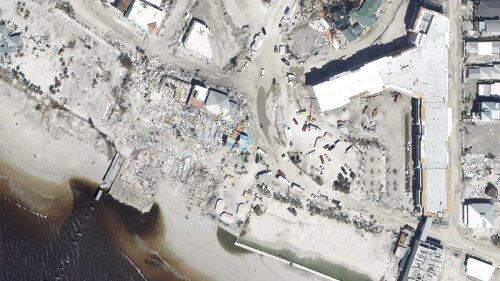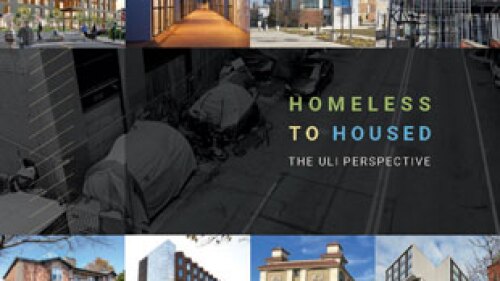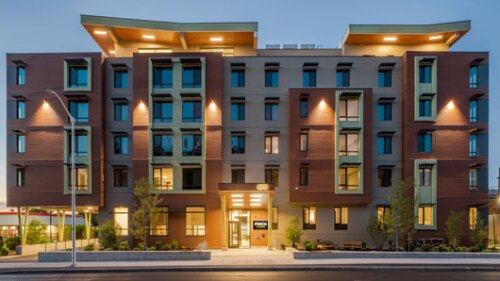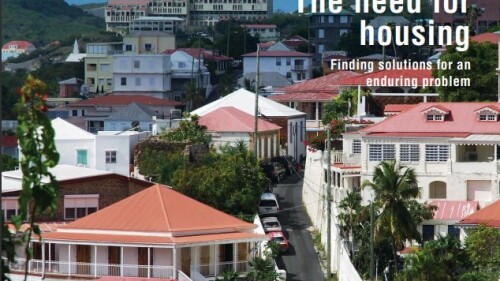In the days after Hurricane Ian hit Southwest Florida, inspectors from the Federal Emergency Management Agency visited Babcock Ranch in Charlotte and Lee counties, arguably the two most impacted by the Category 4 storm. Seeing little damage at the residential community, officials determined the storm had inexplicably missed the 17,280-acre (69.9 km sq) planned development. But that was far from the case.
“We had 8-9 hours of sustained winds over 100 miles per hour. We lost some shingles and some trees were down,” said Jennifer L. Languell, who weathered the storm in her Babcock Ranch home. Languell spoke as part of a panel for the 2022 ULI Florida Meeting in Miami. She’s also founder and president of Trifecta Construction Solutions, which worked on the city’s planning. “A lot of people say, ‘you guys were lucky. It wasn’t luck. It was intentional. We located inland intentionally. We have 30 feet [9.14 m] of elevation. It was intentional that we wanted to be in a place where you could shelter in place.”
Florida’s resilience continues to be a huge and growing priority as existing buildings age and growth across the state remains steady. Strategic decisions and plans focused on strength and resiliency are helping mitigate real estate from wind and flooding damage, and serving as lessons to other, more mature communities planning a more resilient future.
Notwithstanding the 13 feet (3.96 m) of storm surge that inundated Fort Myers Beach and other parts of Southwest Florida, and losses estimated to reach $70 billion, rising tides will be a growing threat statewide. Southeast Florida could see 17 inches (43 cm) of sea-level rise by 2040, leading to $4.2 billion in property losses due to tidal inundation, according to “The Business Case for Resilience in Southeast Florida,” a report from the Southeast Florida Regional Climate Change Compact, Urban Land Institute, and other area business and nonprofits, as cited by Irela Bague, the panel moderator and chief bay officer for Miami-Dade County. Investments in prevention can double or even quadruple their benefits, she said.
“The question is, do we pay now, or do we pay later,” said Bague. “Building resilience into a project can provide tangible benefits and protection, which is a fundamental cost to actually realize the business case for resilience in Southeast Florida.”
Babcock Ranch is an example of “future-proofed” community planning. Planned to maximize the benefit of adjoining a 73,239-acre (368.3 sq km) natural and conservation areas, lakes, stormwater ponds and canals hold or disperse water to the swamps, natural flowways, or the aquifer. The entire community maintains its natural appeal.
“The stormwater ponds don’t look like stormwater ponds. They look like wooded areas,” said Ernie Cox, president, Family Lands Remembered. The consultancy works with landowners, developers, government, and conservation organizations to protect environmental, cultural and agricultural resources.
Structures are designed to withstand 160 mph winds (257.5 kmh) and have earned praise—and lower premiums—from insurance carriers. Power includes 150 megawatts—enough for 30,000 homes (only 19,500 homes are planned) plus the ICC 500-rated hurricane shelter. To better ensure no power disruption, the community has 10 megawatts of battery backup. Throughout the community and region, Florida Power and Light has hardened its infrastructure with concrete poles designed to withstand 200 mph (321.9 kmh) winds, and Babcock Ranch has its own substation.
“The fundamental description of natural disaster recovery is don’t put all our eggs in one basket,” Languell said.
Planning began with maps. Poring over historic photographs, they saw how water flowed before agriculture was replaced by homes. Construction helped restore some of the natural flowways, from the swamps to the Caloosahatchee River. They elevated certain areas, placed homes two feet higher than the roads, and made sure water flowed more naturally.
“We have learned not to fight mother nature. Water will go where it wants to go,” she said. “We were monitoring lake levels during the entire storm. We could have handled 14 more inches [35.56 cm] of rain before the system would be tapped out. We wanted homeowners to understand that this was all intentional.”
Across Florida, other master planned communities are taking a similar path. Some are being built near—and taking advantage of—the 11 million-acre (44,515.4 km sq) Florida Wildlife Corridor. Conceived as a wilderness conservation system, the corridor’s interconnected network of natural and manmade water control measures help facilitate water controls. Near the Atlantic and along the corridor, a new community planned from New Smyrna to Edgewater will set aside 75 percent of its 70,000 acres (283.3 km sq) of land as a conservation area, Cox said. Such parks, preserves, swamps and wetlands will facilitate stormwater mitigation for the planned mixed-use development, which could include 8,500 residences.
“As we move into new areas, it’s very important to think about the green areas early,” Cox said.
The market is buying in. Babcock Ranch sold 200 homes in October and November. Investors are asking about sustainability initiatives, whether in communities or larger portfolios, Languell said. In some areas, governments are fast-tracking permitting and partnering with developers.
“We need to make investments now. We need to get it done now, not in 20 to 30 years,” he said. “There’s an urgency to get it done…It’s about mitigating risk, but it’s also about making money. You’re making more money by mitigating risk.”
“Yes, there was a cost. But stood up trees, that was the extent of our repairs. And we had about $15,000 in damage to signs,” she said. “The next day, the kids were out riding their bikes and were at the ice cream shop. That’s why FEMA reported there was no damage.”





